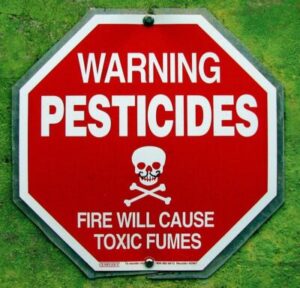FIFRA Primer: Pesticide Regulation and Compliance
March 26, 2015
Before FIFRA: History of Pesticides in the U.S.
Pesticides have borne a long, and at times, controversial history in the United States. “First generation” pesticides were highly toxic compounds, such as cyanide and hydrogen cyanide, which were soon abandoned due to their toxicity and inadequacy.
The “second generation” of pesticides were synthetic, or manmade, chemicals—including the infamous chlorinated hydrocarbon, DDT. Paul Muller, a Swiss chemist, first discovered dichlorodiphenyltrichloroethane (DDT) in 1939. After the second world war, military-funded research also produced many synthetic pesticides.
Of the myriad compounds available, however, DDT was certainly the standout among the second generation. Unlike earlier pesticides, it was more selective in its action; that is, it appeared to have a lower toxicity for mammals. It also did not have to be applied as often as previous pesticides, nor was it a water-soluble compound—meaning rain did not degrade its effectiveness.
The use of DDT began to spread across the globe, due in no small part to its ease of use and inexpensiveness. It was so revolutionary for the agricultural industry that in 1948, Muller was awarded the Nobel Prize for Physiology or Medicine. It also had other applications that may seem far-fetched or disconcerting in hindsight, but DDT was used as a delousing agent for World War II soldiers and mosquito control (some may remember DDT-spraying trucks roving through neighborhoods).
But all of this changed in 1962 with the publication of an exposé on synthetic pesticides, with an exigent focus on DDT. Silent Spring, by Rachel Carson, was a groundbreaking and contentious work. It carefully outlined how the overuse of synthetic pesticides contributed to the poisoning of all living fauna and the widespread contamination of the environment. Of course, this did nothing to sustain dangerous status quo. Indeed, it was the harbinger of its dis-accreditation.
Upon the the release of the book, uproar swelled; outright objections boiled up, the author was vilified, and specious arguments were made against the book’s content by agricultural scientists of the time.
But then-president John F. Kennedy was so taken by the international best seller, he commissioned the Science Advisory Committee to investigate the claims made by Carson. The committee’s published its findings, “The Uses of Pesticides”, confirming the science behind Silent Spring.
Her book, along with the public’s heightened awareness of human effects on our ecosystems, led to the birth of environmentalism and the creation of the Environmental Protection Agency (EPA) in 1970. DDT was finally banned outright in 1972, almost entirely due to Carson’s controversial book. Silent Spring is still on school required reading lists today.
After FIFRA: Pesticide Regulation Today
The Federal Insecticide, Fungicide, and Rodenticide Act (FIFRA) was passed in 1947, but at the time, it was established mostly to standardize labeling and registration of pesticides with the Department of Agriculture.
In 1972, the law was rewritten when amended by the Federal Environmental Pesticide Control Act (FEPCA). And again, in 1996, FIFRA became more heavily regulated with the addition of the Food Quality Protection Act (FQPA).
Now, when a new pesticide is considered for license by the EPA, the application must show that it “will not generally cause unreasonable adverse effects on the environment.”
As stated by the EPA, an “unreasonable adverse effect” could be viewed as,
any unreasonable risk to man or the environment, taking into account the economic, social, and environmental costs and benefits of the use of any pesticide, or
a human dietary risk from residues that result from a use of a pesticide in or on any food inconsistent with the standard under section 408 of the Federal Food, Drug, and Cosmetic Act.
Compliance with FIFRA regulation is now a must, and this is especially so during EPA inspections.
According to hercenter.org, some commonly inspected features of a generator or facility utilizing or handling pesticides are:
- Personnel protection equipment (PPE)
- Pesticide application equipment
- Storage areas, including containers
- Disinfectants and labels
An EPA Inspector may also ask to review your records for FIFRA compliance. These records may include:
- Records of purchased pesticides
- Pesticide application records
- Outline of pest control program
- Pesticide disposal manifests
- Certification status of pesticide applicators
- Recent ventilation rating for pesticide fume hood and pesticide mixing/storage areas
Need Help? Call us at 800-936-2311
Have any questions about FIFRA requirements and compliance or how to properly dispose of a particular of pesticide? Call Hazardous Waste Experts at 800-936-2311 or click here to email us.
Photo credit: Wikimedia Commons
Sources: A History of Pesticide Use – Oregon State University
Federal Insecticide, Fungicide, and Rodenticide Act (FIFRA) – EPA
The Story of Silent Spring – NRDC
Federal Insecticide, Fungicide and Rodenticide Act – HERCenter


